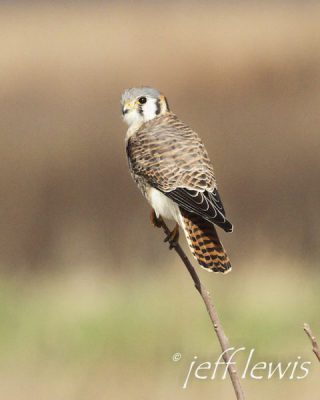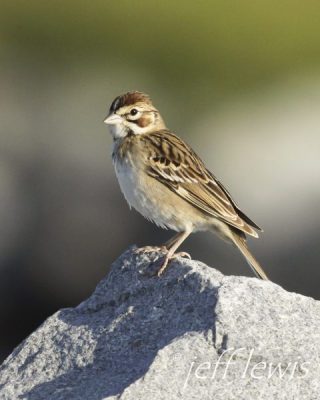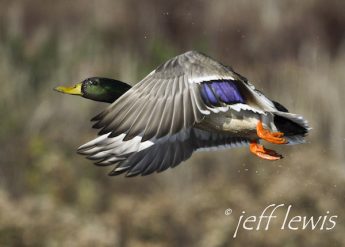Reprinted from the Outer Banks Voice
October is a special month for birders on the Outer Banks.
Supporter Spotlight
Waterfowl are flocking in. Most of our dabbling, or puddle, ducks arrive this month. Check out the impoundments on the Pea Island, Mackay Island and Mattamuskeet national wildlife refuges, as well as the pond on Bodie Island.
American wigeon, blue-winged teal, northern shoveler, northern pintail and green-winged teal should be easy to find. Gadwall, mallard and black duck numbers increase this month as migrants join our year-round populations.

Late in the month, a few snow geese and diving ducks may show up – but that’s mostly a November thing. Our local Canada geese (watch where you step!) populations will be increased by the “real” ones as they migrate down from the north.
As far as sea ducks go – a few start “stringing out” over the ocean late in October but November is a better month to look for them.
October’s Raptors
Our raptor species list during the breeding season is pretty slim: ospreys, a few red-tailed hawks, red-shouldered hawks in our wet forests, a few bald eagles and very few – but increasing numbers of – Cooper’s hawks.
Supporter Spotlight
In October, most of our ospreys leave us for warmer climes, but we have a whole host of other raptors pushing through, some continuing south, others here to stay for the winter.
The woodland hawks that arrive are sharp-shinned hawks and Cooper’s hawks, the bane of backyard birdwatchers. These bird-eating accipiters like to find successful feeding stations and set up residency, much to the chagrin of the local mourning doves and blue jays.
Our local red-tailed hawks are joined by a wave of their overwintering brethren from the north – competition for the rats and rabbits.
Northern harriers, or marsh hawks, arrive this month to help keep the rodent population down to manageable levels. They can be seen – look for the white rumps – drifting low over marshes and farm fields as they search for their next meal.
Falcons began showing up in September but are here in greater numbers this month.
The beautiful American kestrel, or sparrow hawk, the quick-as-lightning and slightly larger merlin and the powerful and famous peregrine falcon are all present in October.

Kestrels are easy to find on the Alligator River National Wildlife Reserve and on utility lines across the state where they feed primarily on large insects and mice. Merlin and peregrine numbers peak in October and can be found mostly around wet habitats. The impoundments at the Pea Island National Wildlife Reserve and the Cape Point area in Buxton are two good places to look.
Merlin feed on songbirds and shorebirds. Peregrine falcons feed primarily on shorebirds and ducks. They are incredible predators and have been clocked at more than 200 mph during dives.
Our bald eagle population increases in fall and winter as migrants join the local populations. They tend to congregate around the best feeding areas – places where there are plenty of fish, or habitats rich with waterfowl.
These majestic raptors are big, strong predators, but will also gladly eat carrion if it is available. Eagles can be reliably located on the Alligator River and Lake Mattamuskeet national wildlife refuges.
Shorebirds and Songbirds
Shorebird migration, which has been ongoing since July, continues this month.
A few species are long gone: black-necked stilt and upland sandpiper, to name a couple. Several sandpipers are nearing the end of their fall migration: spotted sandpiper, solitary sandpiper, stilt sandpiper, white-rumped sandpiper, pectoral sandpiper, semipalmated sandpiper.
Others, like greater yellowlegs, sanderling, dunlin, short- and long-billed dowitchers and Wilson’s snipe are just settling in for the winter. Look for them in the appropriate wet habitats.
Willets, here year-round, actually serve their terms in shifts. Our eastern willets, here during the summer, are replaced by their look-alike western willets during the fall and winter. Both can be found on our ocean beaches, along with the little “wave-chaser” sanderlings.
Songbirds undergo a changing of the guard, as well.
Many of our breeding birds leave us this time of year: indigo buntings and blue grosbeaks, orchard orioles, yellow-billed cuckoos, red-eyed vireos, blue-gray gnatcatchers and chimney swifts, to name a few. All of our swallows leave for the winter, except for tree swallow, which increases a hundred-fold as swarms of birds from the north move to North Carolina for the winter.
All of our flycatchers also depart, replaced by only the eastern phoebe, except for occasional western rarities, in winter. Almost all of our beautiful, neo-tropical wood-warblers exit for Central and South America.
Out of 17 species of warblers that nest in Eastern North Carolina, only two are hardy enough to remain for the winter, pine warbler and common yellowthroat. They are joined by orange-crowned, palm and yellow-rumped warblers as the only winter representatives of this large family in our region.
One of the most overlooked and under-appreciated families of birds that arrives primarily in October is the sparrow family, emberizidae. This family includes our beloved back-yard eastern towhee, found here year-round, dark-eyed junco and white-throated sparrow, as well as many others.

In various open habitats you can look for chipping sparrow, field sparrow, savannah sparrow, vesper sparrow, and lark sparrow. In brushy areas seek-out song, Lincoln’s and white-crowned sparrows. In swampy habitats you can find swamp sparrows. In wooded areas white-throated and fox sparrows are likely. And there are others, some that just pass through and some that spend the winter. These “little brown jobs” can be a very challenging and rewarding family of birds to look for and identify.
October for backyard birdwatchers means, in addition to keeping the year-round birds happy, watching for rose-breasted grosbeaks, indigo buntings, red-breasted nuthatches and Baltimore orioles.
If you live in an area that is heavy with wild muscadine grapes, then you probably have orioles. You can often hear them chattering in the treetops even if you can’t see them. Sometimes nectar feeders or grape jelly will lure them down. Ruby-throated hummingbird numbers will decline in October, but for those Outer Bankers who leave their feeders out, a new, overwintering crop of hummers should show up late in the month.
And keep an eye on those birdbaths, as any number of migrant songbirds may show up for a refreshing dip or drink.
Wildlife Festival Continues
Here on the Outer Banks we have the Wings Over Water Wildlife Festival held each October. Dozens of birding, paddling, photography and natural history trips are offered, led mostly by local or regional experts. There are also refuge tours, workshops and programs offered. The 20th anniversary festival began Tuesday and continues through Sunday.
For more information, visit www.wingsoverwater.org or call 252-216-9464.
This story is provided courtesy of the Outer Banks Voice, a digital newspaper covering the Outer Banks. Coastal Review Online is partnering with the Voice to provide readers with more environmental and lifestyle stories of interest about our coast. You can read other stories about the Outer Banks here.








